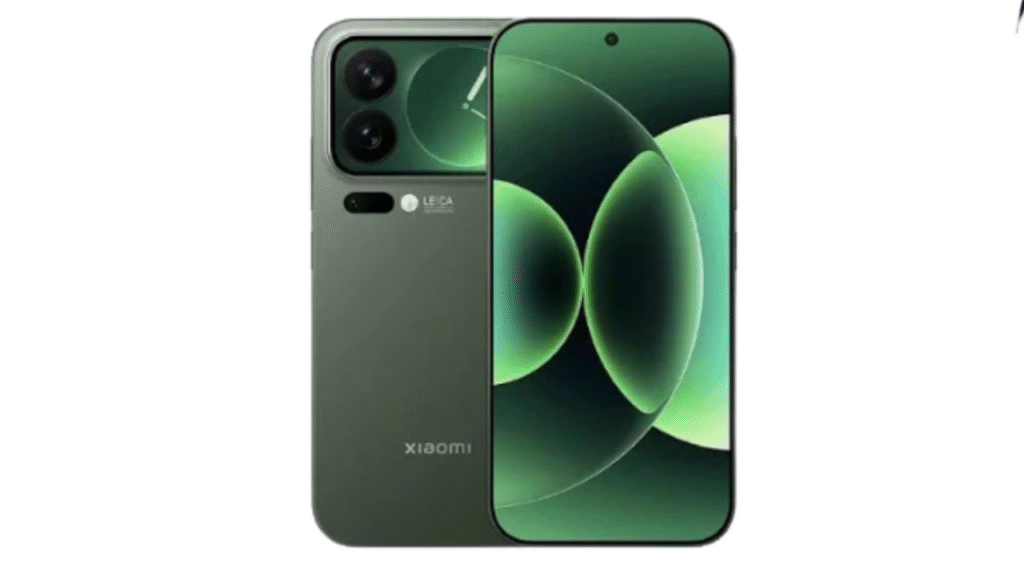This month, the Xiaomi 17 Pro and Xiaomi 17 Pro Max launched in China. These are the brand’s latest and most powerful phones.
In September, a different company introduced its Pro and Pro Max smartphones. Apple is the company that introduced the iPhone 17 Pro and iPhone 17 Pro Max. Xiaomi’s latest phones will compete directly with the iPhone in China.
However, Huawei, which has regained its strength in recent years, poses a threat to both businesses. Speaking of the Xiaomi 17 Pro series, the company has equipped it with a Leica-tuned triple rear camera setup. Let’s explore the highlights of these phones.
Will compete with iPhone 17 Pro
Xiaomi has already declared that it competes directly with Apple. The most recent phones from both companies have names that are very similar. The Xiaomi 17 Pro series also has a display on the back panel called Dynamic Back Display, which the company calls it. The camera platform of the iPhone 17 Pro series is somewhat reminiscent of its design. Now it remains to be seen whether people like this phone or not.
Also Read: Samsung Galaxy S24 Ultra 5G: Bumper Offers Great Indian Festival sale on Amazon
Xiaomi 17 Pro: Specifications
The Xiaomi 17 Pro features a 6.3-inch OLED display, while the Pro Max features a 6.9-inch OLED display. Both phones also feature a display on the rear, albeit in different sizes. Both smartphones are powered by the Snapdragon 8 Elite Gen 5 processor, which runs on Qualcomm’s latest software.
| Network | Technology | GSM / CDMA /HSPA /EVDO/ LTE /5G |
| Display | Type | LTPO AMOLED, 68B colors, 2160Hz PWM, 120Hz, Dolby Vision, HDR Vivid, HDR10+, 3500 nits (peak) |
| Size | 6.3 inches, 97.1 cm2 (~89.5% screen-to-body ratio) | |
| Resolution | 1220 x 2656 pixels, 19.5:9 ratio (~464 ppi density) | |
| Protection | Xiaomi Dragon Crystal Glass | |
| Secondary display (on the back): | ||
| LTPO AMOLED, 120Hz, Dolby Vision, HDR Vivid, HDR10+, 3500 nits (peak) | ||
| 2.7 inches, 572 x 904 pixels | ||
| Body | Dimension | 151.1 x 71.8 x 8 mm (5.95 x 2.83 x 0.31 in) |
| Weight | 192 g (6.77 oz) | |
| Build | Glass front (Dragon Crystal Glass), aluminum frame | |
| Sim | Nano-SIM + Nano-SIM | |
| IP68 dust tight and water resistant (immersible up to 4m for 30 min) | ||
| Platform | OS | Android 16, HyperOS 3 |
| Chipset | Qualcomm SM8850-AC Snapdragon 8 Elite Gen 5 (3 nm) | |
| CPU | Octa-core (2×4.6 GHz Oryon V3 Phoenix L + 6×3.62 GHz Oryon V3 Phoenix M) | |
| GPU | Adreno 840 | |
| Memory | Card Slot | No |
| Internal | 256GB 12GB RAM, 512GB 12GB RAM, 512GB 16GB RAM, 1TB 16GB RAM | |
| Main Camera | Triple | 50 MP, f/1.7, 23mm (wide), 1/1.28″, 1.22µm, dual pixel PDAF, OIS |
| 50 MP, f/3.0, 115mm (periscope telephoto), PDAF (20cm – ∞), OIS, 5x optical zoom | ||
| 50 MP, f/2.4, 17mm, 102˚ (ultrawide), 1/2.76″, 0.64µm | ||
| Features | Laser AF, color spectrum sensor, Leica lens, Dual-LED dual-tone flash, HDR, panorama | |
| Video | 8K@30fps (HDR), 4K@30/60/120fps (HDR10+, 10-bit Dolby Vision HDR, 10-bit LOG), 1080p@30/60/120/240/960fps, 720p@1920fps, gyro-EIS | |
| Selfie camera | Single | 50 MP, f/2.2, 21mm (wide), PDAF |
| Features | HDR, panorama | |
| Videos | 4K@30/60fps, 1080p@30/60fps, HDR10+, gyro-EIS | |
| Sound | LoudSpeaker | Yes, with stereo speakers (with Dolby Atmos) |
| 3.5mm Jack | No, | |
| 24-bit/192kHz Hi-Res & Hi-Res wireless audio | ||
| Snapdragon sound | ||
| Comms | WLAN | Wi-Fi 802.11 a/b/g/n/ac/6e/7, dual-band, Wi-Fi Direct |
| Bluetooth | 5.4, A2DP, LE, aptX HD, aptX Adaptive, LHDC 5 | |
| Positioning | GPS (L1+L5), BDS (B1I+B1c+B2a), GALILEO (E1+E5a), QZSS (L1+L5), NavIC (L5), GLONASS | |
| NFC | Yes | |
| Radio | No | |
| USB | USB Type-C 3.2, Display Port, OTG | |
| Infrared | Yes | |
| Features | Sensors | Fingerprint (under display, ultrasonic), accelerometer, proximity, gyro, compass, barometer |
| Ultra Wideband (UWB) support | ||
| Battery | Type | Si/C Li-Ion 6300 mAh |
| Charging | 100W wired, PD3.0, QC3+, 100W PPS | |
| 50W wireless | ||
| 22.5W reverse wireless | ||
| Misc | Colors | Black, White, Purple, Green |
| Models | 25098PN5AC |
Also Read: Vivo V60e 5G: What’s the Difference Between the V60e 5G and V50e 5G Terms of Processor
In terms of optics, the phone has a 50MP main lens, a 50MP ultra-wide-angle lens, and a 50MP telephoto lens. On the front, the company has provided a 50MP selfie camera. The Xiaomi 17 Pro packs a 6300mAh battery, while the Pro Max variant packs a 7500mAh battery. They also offer 100W wired charging, 50W wireless charging, and magnetic charging.
Xiaomi 17 Pro: Price
Both Xiaomi phones have currently been launched in the Chinese market, and there’s no word on when they will launch in the global market. The Xiaomi 17 Pro Max launched in China at a starting price of 5,999 yuan (approximately Rs.74,700). This price is for the 12GB RAM + 512GB storage variant.
As for the Xiaomi 17 Pro, its price starts at 4,999 yuan (approximately Rs. 62,300). This price is for the model with 256GB of storage and 12GB of RAM. The colors Black, White, Purple, and Green are available for these phones.
For more information click on II official website II

